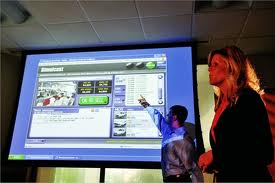Some people say that government auctions in Ohio are like car city with bargains. The problem that many people have is that they simply don’t know that these auctions exist or what kind of deals that they can find. The state offers a number of resources to give you some insight into the auction process as well as what to expect at each auction. Depending on where you live, there can be local, state, and federal auctions nearby. Each auction has a little bit different vehicle makeup in terms of what is normally available and understanding each of them, will give you a better idea about which auction is right for you. Here is a closer look at each type of auction and how you can benefit from it.
Federal Government Auto Auctions in Ohio
All every auction type, auctions held solely by the federal government are normally going to be the least common. They tend to be only held two or three times per year within any given state, including Ohio. These government auctions in Ohio are like car city with bargains if you are interested in fleet vehicles. It is important to keep in mind that fleet vehicles used by the federal government can span a variety of different vehicle types ranging from a small economical car to heavy machinery. In most cases, the cars that you find at these auctions will be made in the America. This means that they will likely be made by Ford, Chevy, or Dodge. It is also important to keep in mind that the federal government will often send a handful of vehicles to state run auctions, which will boost the variety at state auctions.
State Level Auto Auctions in Ohio
State level auto auctions tend to have a much larger variety. While many of them will be fleet vehicles, some will also be seized vehicles. This means that there will not only be a more variety, but also a much wider range of vehicle conditions. A fleet vehicle will have had some sort of maintenance schedule attached to it, but this isn’t the case for cars that were previously owned by private individuals This doesn’t mean that seized or abandoned cars are a bad choice, rather they just require due diligence when researching their background. Fortunately, you will normally be able to find the VIN number before the auction, which can speed up your research time tremendously.
Local Level Auto Auction in Ohio
It surprises most people to find out that local level government auctions in Ohio are like Car City with bargains. This is because local level government auctions tend to combine cars from a variety of different sources. The first source, like other government auctions, is fleet vehicles. The second source is cars that have been impounded for some reason and then never reclaimed (this happens a lot more often that you think).
Finally, many local auctions will allow other sellers, such as banks and car dealerships, to enter cars as well. This makes these auctions a lot bigger. Banks will enter vehicles that have been repossessed because this is how they recoup any losses from the previous owner not paying off their loan. Car dealerships will also submit used cars that did not sell within 60 to 90 days from getting traded-in. Even if they lose money on the sale, it keeps their inventory looking fresh.
What to Expect From Ohio Government Auctions
Now that you have a better idea of what types of government auctions exist in Ohio, it is a good idea to find out more about what the listing normally looks like. This includes the final sale price, type of vehicle, mileage, and any potential damage. To get a better idea about the details of these auctions, let’s take a look at the results from the Ohio State and Federal Surplus Services auction held in June of 2011. This particular auction sold 147 cars and trucks to the public.
If you look solely at the prices, then you can definitely see that government auctions in Ohio are like Car City with bargains. The lowest final bid was only $800 and the most expensive car purchased was just above $5,000. The one exception was a 2006 Mercedes Benz CLS500 with less than 45,000 miles, which sold for $24,500 (still well below book value).
The age of the vehicles had a fairly large expanse. The oldest vehicle came from the mid-90’s, whereas the newest car was less than 3 years old. There was also a solid variety from a selection standpoint as well. The most commonly found car was the Crown Victoria, which normally was between $2,000 and $3,000. These cars were, on average, about 5 years old. Some other cars which populated the list include the: Dodge Stratus, Ford Taurus, Chevy Monte Carlo, Chevy Malibu, and Chevy Impala. There were a variety of domestic trucks as well, normally 1/4 ton trucks.
As you can see, Ohio government auctions are like Car City with bargains. There seem to be two constants – variety and low prices. There are a variety of auction-types as well as vehicle-types. Plus, the final price on these cars was exceptionally low and a great deal for anyone that purchased one. It doesn’t matter what level of government is holding the auction, there will normally be a few hundred cars on the listing. While government fleet vehicles tend to compose most of the inventory, there are a number of abandoned and seized cars available as well.











